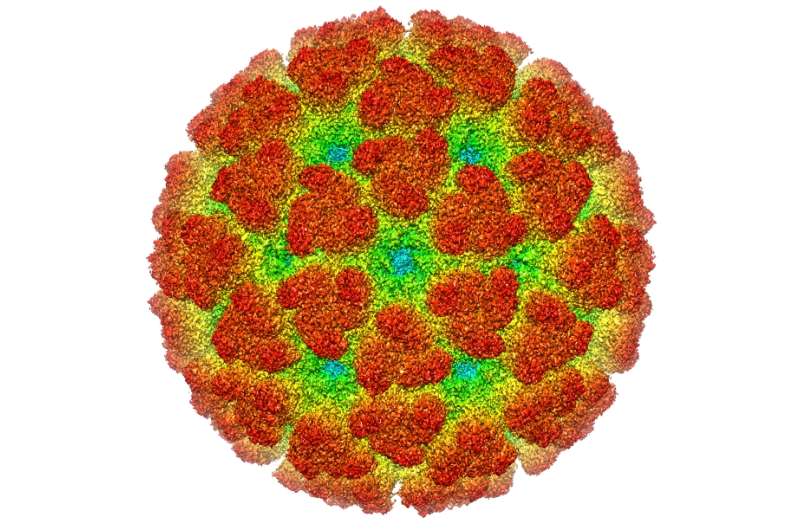Researchers determine how alphavirus changes into infectious state

A key step in the infectious method of a family of disease-causing viruses has been identified by an international team led by scientists from Purdue University.
The research is described in a recent paper in the Proceedings of the National Academy of Sciences.
The team studied the structure of the Chikungunya virus using cyro-electron microscopy and was able to determine how it changes from a non-infectious immature state to a mature state that is able to infect cells.
Chikungunya is a mosquito-borne disease that has infected more than 40 million people since it was first discovered in 1953.
Michael Rossmann, Purdue's Hanley Distinuished Professor of Biological Sciences, says finding how the virus transforms is a step toward finding a treatment.
"This is specifically about the Chikungunya virus, but it's probably similar to a lot of other alphaviruses, which are a common disease pathogens. This particular virus has become a major problem in Asia and Africa."
The research found that the virus fuses with the membrane of a host cell, cleaving a specific protein, uncovering a spike, which is hydrophobic and, therefore, very slippery. This spike is inserted into the cell and the virus releases its genetic material.
Rossmann's laboratory first determined the structure of the Chikungunya virus in 2013.
More information: Moh Lan Yap et al. Structural studies of Chikungunya virus maturation, Proceedings of the National Academy of Sciences (2017). DOI: 10.1073/pnas.1713166114
Journal information: Proceedings of the National Academy of Sciences
Provided by Purdue University




















